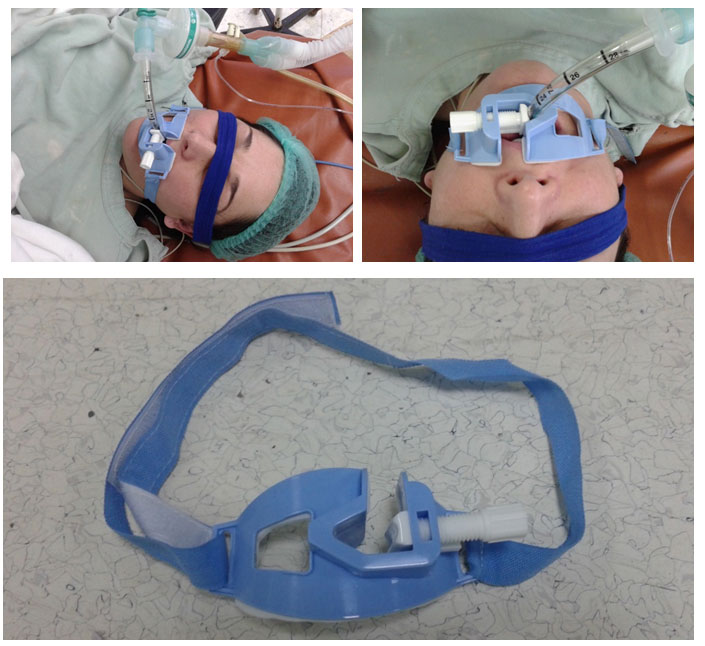Tariq Hayat Khan, MCPS, FCPS
Consultant Anesthesiologist & Pain Specialist, KRL Hospital, Islamabad (Pakistan)

Tracheal intubation is used to establish a secure airway in patients who require mechanical ventilation or who are at risk of aspiration. Unexpected extubation can have serious complications, including hypoxia, airway trauma and death. Various methods and devices have been used to secure ETT, including a bandage, cloth tape, Durapore tape or Multipore tape. We require ease of use, rapid application, and low exerted pressure around the airway.1 It is associated with minimised tube movement and displacement when compared with conventional tape tying, during transporting intubated patients, during chest compressions for CPR or in OR in different positions of the patient including prone position.
Tube holder prevents tune kinking or bending and comes with a built-in bite block, so preventing tube occlusion. It allows a suction tube to pass through. Its cheap and hygienic alternative to conventional methods of ETT securing.2-4
- Fisher DF, Chenelle CT, Marchese AD, Kratohvil JP, Kacmarek RM. Comparison of commercial and noncommercial endotracheal tube-securing devices. Respir Care. 2014 Sep;59(9):1315-23. doi: 10.4187/respcare.02951. Epub 2013 Dec 24. [PubMed] [Free full text]
- Santhosh MC, Torgal SV, Pai RB, Roopa S, Santoshi VB, Rao RP. Comparison of tube-taping versus a tube-holding device for securing endotracheal tubes in adults undergoing surgery in prone position. Acta Anaesthesiol Belg. 2013;64(2):75-9. [PubMed]
- Murdoch E, Holdgate A. A comparison of tape-tying versus a tube-holding device for securing endotracheal tubes in adults. Anaesth Intensive Care. 2007 Oct;35(5):730-5. [PubMed]

